The 30 Richest Places to Live in Nebraska: Wealth and Prosperity Across the State
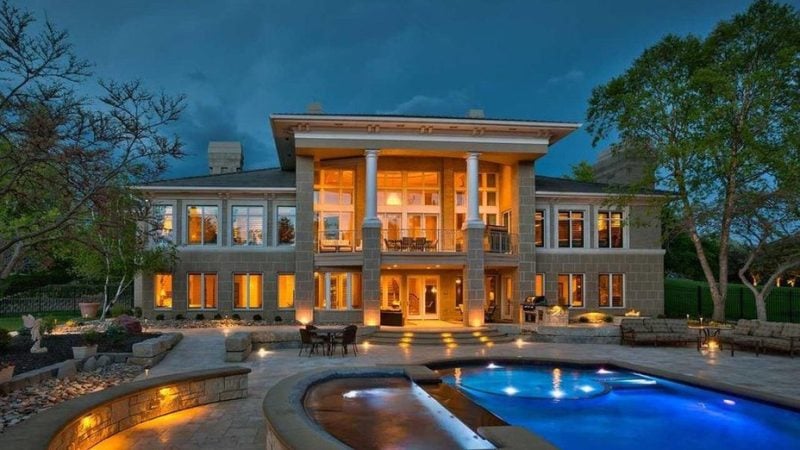
Nebraska’s economic landscape extends far beyond its agricultural reputation, encompassing communities with substantial wealth and distinctive lifestyles.
From suburban areas near major metropolitan centers to smaller cities throughout the state, these affluent locations showcase impressive median household incomes and property values that set them apart from typical Midwestern communities.
The state’s wealthiest places span from established neighborhoods in Omaha and Lincoln to growing suburban communities like Papillion, Elkhorn, and Eagle, each offering unique economic advantages and quality of life factors.
These communities benefit from various economic drivers, including proximity to major employment centers, strong local economies, and desirable amenities that attract high-income residents and contribute to sustained property value growth.
Here are the 30 richest places to live in Nebraska:
1. Papillion
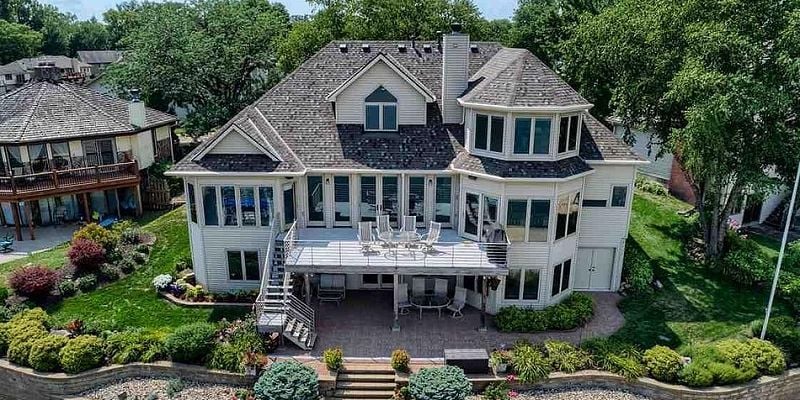
Papillion stands as Nebraska’s wealthiest city with a population exceeding 5,000 residents. The Sarpy County community boasts an average household income of $135,054 as of 2023.
This Omaha suburb has earned national recognition for its exceptional quality of life. Money Magazine consistently ranks Papillion among America’s best places to live, with the city reaching #5 on their annual list.
The median home value in Papillion reaches $269,600, significantly higher than Nebraska’s state average of $188,542. Residents enjoy top-rated schools and notably safe neighborhoods.
Major employers have established headquarters in Papillion, including Black Hills Energy and Nebraska’s largest credit union. The city offers a traffic-free 15-minute commute to Omaha’s financial services and healthcare sectors.
Papillion’s combination of high incomes, strong employment opportunities, and premium amenities solidifies its position as Nebraska’s most affluent community.
2. Elkhorn
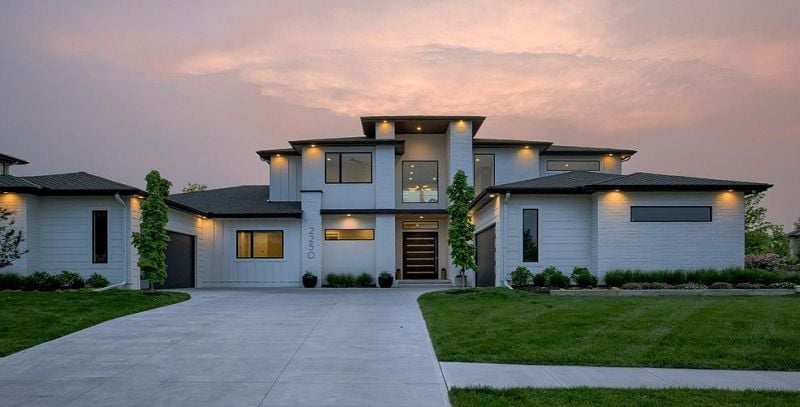
Elkhorn stands as one of Nebraska’s most affluent communities, located in western Omaha. The city has attracted wealthy residents seeking premium suburban living with convenient access to metropolitan amenities.
The Elkhorn School District serves this upscale area and maintains some of Nebraska’s highest test scores. College acceptance rates from local schools consistently rank among the state’s best performers.
Home prices in Elkhorn significantly exceed Nebraska’s state average of $188,542. The market data reflects strong demand from buyers willing to pay premium prices for quality neighborhoods.
The Sanctuary neighborhood along the Elkhorn River represents the area’s most exclusive residential enclave. This community features approximately 90 homes with some of the highest property values in the Omaha metropolitan region.
Elkhorn’s combination of excellent schools, upscale housing, and desirable location continues to attract affluent families and professionals seeking quality residential communities.
3. Eagle
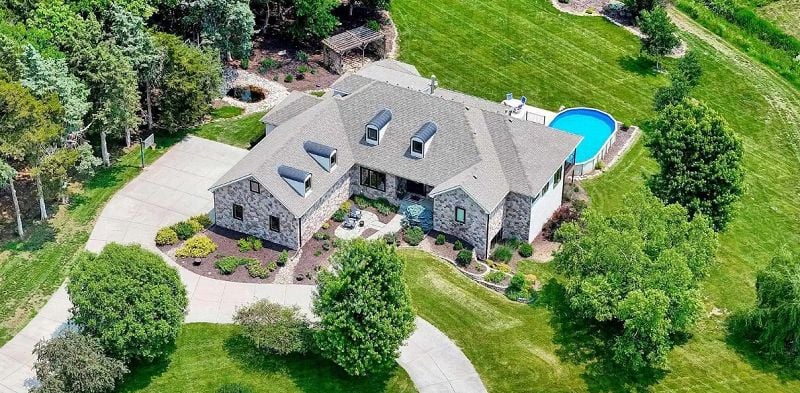
Eagle stands as one of Nebraska’s most affluent communities, attracting wealthy residents with its upscale atmosphere. The city offers luxury housing developments that cater to high-income families seeking premium living experiences.
Located in Cass County, Eagle provides residents with a small-town feel while maintaining proximity to Omaha’s employment opportunities. This strategic location makes it attractive to professionals and business executives.
The community features well-maintained neighborhoods with large lots and custom-built homes. Many properties showcase modern architectural designs and high-end amenities that reflect the area’s wealthy demographic.
Eagle’s low crime rates and quality municipal services contribute to its desirability among Nebraska’s affluent population. The city maintains excellent infrastructure and public facilities that support its upscale residential character.
Local amenities include recreational facilities and dining establishments that serve the community’s discerning residents.
4. La Vista
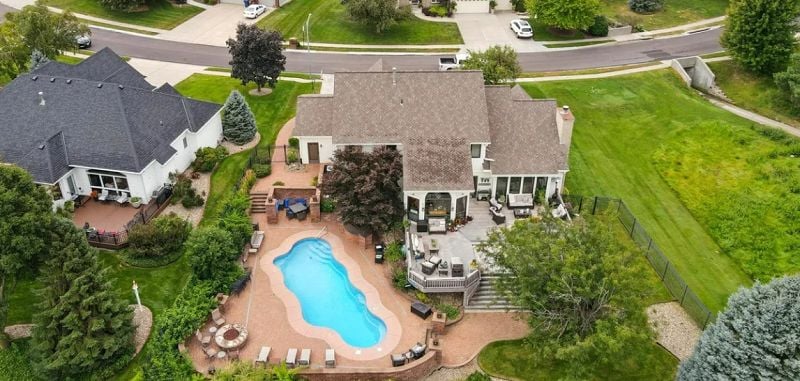
La Vista stands out as one of Nebraska’s most desirable residential communities. The city attracts affluent residents with its strategic location and quality amenities.
Home prices in La Vista exceed Nebraska’s state average of $188,542. This premium reflects the area’s strong market demand and desirable living conditions.
The community benefits from its proximity to Omaha while maintaining a suburban atmosphere. Residents enjoy access to metropolitan opportunities without urban congestion.
La Vista’s neighborhoods consistently rank among the most sought-after in the region. The market data shows people actively choose to invest in this area.
The city combines economic prosperity with family-friendly environments. Quality schools and recreational facilities contribute to its appeal among wealthy households.
La Vista’s real estate market demonstrates sustained growth patterns. Property values reflect the community’s reputation as a premier residential destination in eastern Nebraska.
5. Bellevue
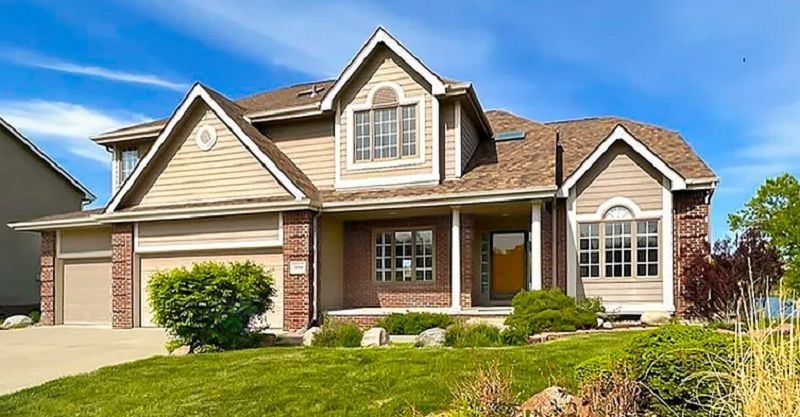
Bellevue stands as one of Nebraska’s most financially stable communities with a median household income of $70,647. This exceeds the national median of $67,500, demonstrating the city’s economic strength.
The city maintains a poverty rate of just 9.1%, which is 35% lower than the national average. This low poverty rate indicates widespread financial security among residents.
Sarpy County, which includes Bellevue, has been identified as Nebraska’s richest county with a median household income of $88,408. This county-wide prosperity contributes to Bellevue’s attractive economic profile.
Money Magazine recognized Bellevue as Nebraska’s representative for “Best Place to Live in Every State.” The designation reflects the city’s combination of economic opportunity and quality of life factors that attract affluent residents.
6. Omaha
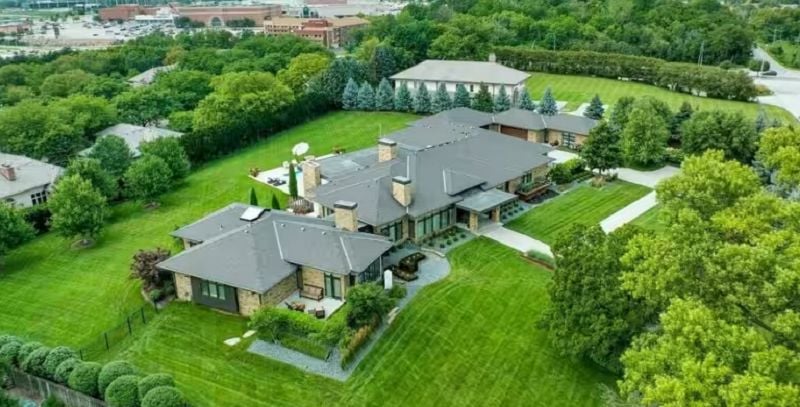
Omaha stands as Nebraska’s major urban center and home to Warren Buffett, one of the world’s richest men. The city dominates the state’s luxury real estate market with numerous high-end neighborhoods.
Several exclusive and wealthy neighborhoods within Omaha attract affluent residents from across the country. These areas showcase impressive real estate values and distinctive lifestyles that set them apart from typical Midwestern communities.
The city’s neighborhoods vary greatly in quality and median home values. Market data shows people actively seek out the most desirable areas, creating strong demand for prime locations.
Omaha’s diverse economic landscape extends beyond traditional industries. The combination of business opportunities and established wealth has created pockets of significant affluence throughout the metropolitan area.
7. Lincoln
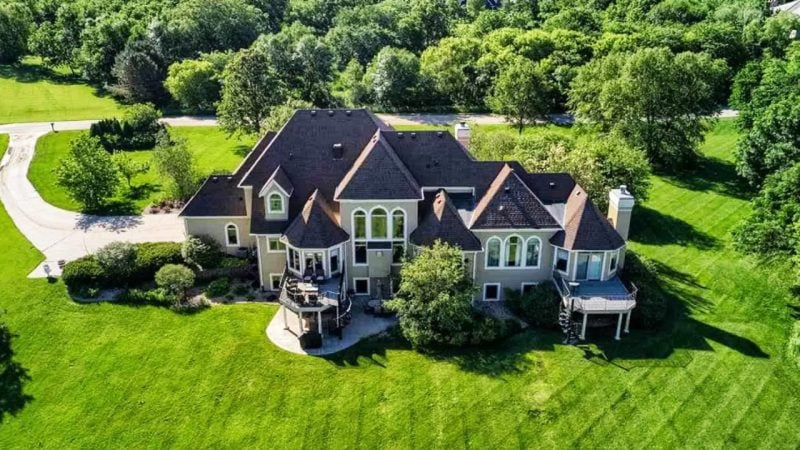
Lincoln stands out as Nebraska’s most expensive place to live according to recent analysis. The 68520 zip code specifically ranks as the state’s priciest residential area.
Home prices in Lincoln exceed Nebraska’s state average of $188,542. The city’s real estate market reflects strong demand from residents seeking quality neighborhoods.
Lincoln’s status as the state capital contributes to its economic stability. Government employment and the University of Nebraska provide steady income sources for many residents.
The city offers diverse housing options from historic neighborhoods to modern developments. Premium communities feature higher property values and exclusive amenities.
Lincoln’s real estate market has benefited from Nebraska’s overall housing growth. The state has seen impressive property value increases over the past decade.
Affluent Lincoln neighborhoods showcase the lifestyle preferences of Nebraska’s wealthy residents. These areas combine urban convenience with Midwestern charm.
8. Chalco
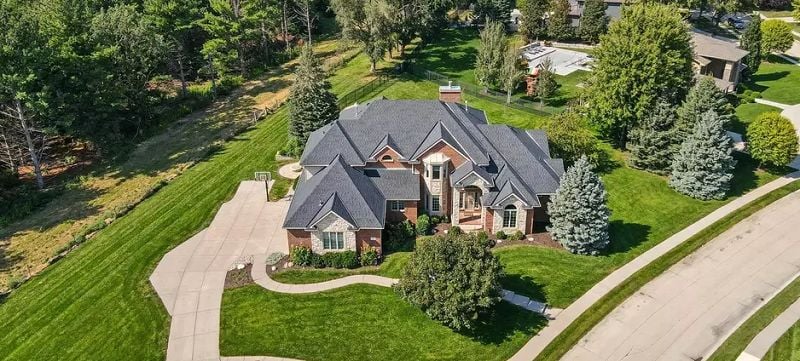
Chalco stands as Nebraska’s fourth wealthiest neighborhood, located in Sarpy County on Omaha’s outskirts. This affluent census-designated place boasts a median household income of approximately $112,000.
The community sits on bluffs overlooking the Missouri River along Interstate 80. Residents enjoy quick access to Omaha while maintaining rural character with surrounding farmland vistas.
Chalco’s population of 10,092 experiences a poverty rate of just 5.7%, which is 59% lower than the national average. The typical household earns $76,250 annually compared to the national median of $67,500.
Home prices in Chalco remain below Nebraska’s state average of $188,542. The area attracts residents seeking suburban living with urban accessibility thirty minutes from downtown Omaha.
9. Dundee
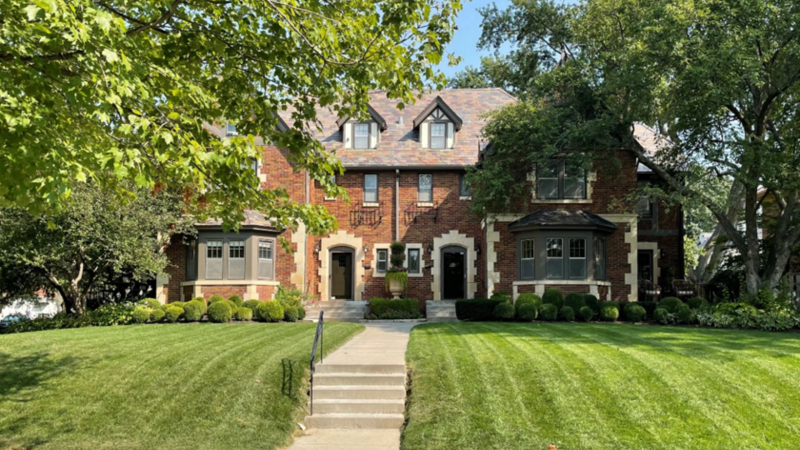
Dundee stands as one of Omaha’s most prestigious historic neighborhoods. The area features tree-lined streets with well-preserved early 20th-century architecture.
Property values in Dundee consistently rank among the highest in the metro area. The neighborhood attracts affluent professionals and established families seeking upscale urban living.
Dundee’s central location provides easy access to downtown Omaha and major employment centers. The community maintains its historic charm while offering modern amenities and services.
The neighborhood features upscale dining establishments and boutique shopping along its main corridors. Residents enjoy walkable streets and a strong sense of community identity.
Home prices reflect the area’s desirability and prime location within Omaha. The combination of historic character and urban convenience makes Dundee a sought-after address for wealthy residents.
10. Bellevue West
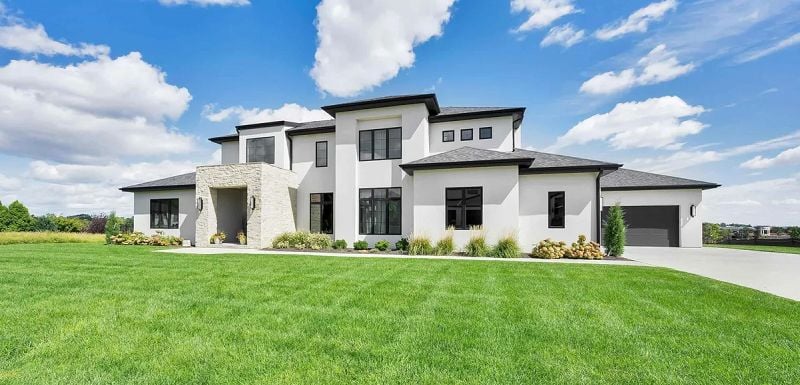
Bellevue West represents one of the most desirable residential areas in the Omaha metropolitan region. This neighborhood attracts affluent families seeking suburban comfort with urban accessibility.
The area benefits from Bellevue’s strong economic foundation and strategic location near Offutt Air Force Base. Military personnel and civilian contractors contribute to the neighborhood’s stable housing market and consistent demand.
Residents enjoy well-maintained properties and established infrastructure. The neighborhood features mature trees and spacious lots that appeal to families prioritizing outdoor living space.
Bellevue West offers convenient access to Omaha’s business districts while maintaining a quieter residential atmosphere. The location provides easy commuter routes without the congestion of inner-city living.
Local amenities include quality shopping centers and recreational facilities. The neighborhood’s proximity to parks and golf courses enhances its appeal to active residents seeking leisure opportunities close to home.
11. Millard
Millard represents one of Omaha’s most established affluent communities. This western Omaha neighborhood attracts families seeking quality schools and spacious properties.
The area features a mix of mature subdivisions and newer developments. Home values consistently rank above the metro average, with many properties exceeding $400,000.
Millard’s location provides easy access to major employers and shopping districts. The neighborhood maintains strong property values due to its proximity to excellent public schools.
Residents benefit from well-maintained infrastructure and parks. The community offers a suburban lifestyle with convenient urban amenities nearby.
The neighborhood’s established nature means mature trees and landscaping enhance property appeal. Local amenities include recreational facilities and shopping centers that serve the community’s needs.
Millard continues attracting professionals and families who value educational opportunities and neighborhood stability.
12. Ralston
Ralston stands as Nebraska’s oldest city and offers residents a unique blend of history and modern amenities. Located in Sarpy County, this community of approximately 7,305 residents maintains a strong economic profile.
The typical household in Ralston earns $60,106 annually. This figure reflects the city’s stable middle-class foundation and consistent employment opportunities in the region.
Ralston’s poverty rate sits at 8.3%, which is notably lower than the national average. Nearly 43% of households earn less than $50,000 per year, indicating a diverse economic mix within the community.
The city features quality schools and safe neighborhoods that attract families seeking suburban stability. Ralston’s active arts and culture scene includes local theater groups and frequent live music performances.
The vibrant downtown area contributes to Ralston’s friendly atmosphere and community engagement. Its location in extreme eastern Nebraska along the Missouri River provides residents with both urban accessibility and scenic surroundings.
13. Gretna
Gretna stands out as one of Nebraska’s premier suburban communities. The city consistently ranks among the best Omaha suburbs for residents seeking an upscale lifestyle.
Home prices in Gretna significantly exceed Nebraska’s state average of $188,542. This price premium reflects the community’s desirability and strong market demand.
The city attracts families and professionals who value quality schools and neighborhood amenities. Gretna’s proximity to Omaha provides residents with urban employment opportunities while maintaining a suburban atmosphere.
Real estate appreciation in Gretna demonstrates the area’s economic stability. The community’s housing market remains robust compared to other Nebraska locations.
Residents benefit from lower crime rates and well-maintained neighborhoods. These factors contribute to Gretna’s reputation as a top choice for affluent families in the greater Omaha metropolitan area.
14. Bennington
Bennington stands out as one of Nebraska’s most desirable communities, with home prices significantly exceeding the state average of $188,542. The city attracts affluent residents seeking premium living experiences in a well-established area.
The Bennington Lake neighborhood represents the pinnacle of local luxury living. Located near 168th and Bennington Road, this development emerged in the early 2000s with most homes under 20 years old.
Residents enjoy convenient access to amenities in nearby Elkhorn and West Omaha within a 10-minute drive. Downtown Omaha remains accessible with a 25-30 minute commute, providing urban conveniences while maintaining suburban tranquility.
The community’s appeal stems from its combination of newer construction, strategic location, and proximity to recreational facilities. Bennington continues drawing wealthy families who value quality neighborhoods with modern infrastructure and convenient regional access.
15. Fort Calhoun
Fort Calhoun sits north of Omaha along Highway 75, offering residents scenic Missouri River valley views from elevated bluffs. The city combines historical significance as the original Fort Atkinson site with natural beauty.
Home prices in Fort Calhoun exceed Nebraska’s state average of $188,542 substantially. This premium reflects the area’s desirability and proximity to Omaha employment centers.
The community maintains small-town charm while providing convenient access to metropolitan amenities. Residents benefit from a reasonable cost of living despite higher housing costs.
Local businesses including Joe’s Market and D&R Autos support the community’s economic foundation. The Fort Calhoun Public Library and Fire Department provide essential services.
The city ranks 7 out of 10 on quality of life measures. Nearby attractions like Fontenelle Forest and Platte River State Park offer outdoor recreation opportunities for residents seeking natural escapes.
16. Valley
Valley sits in Douglas County and has established itself as one of Nebraska’s most desirable suburban communities. The city attracts affluent families seeking proximity to Omaha while maintaining a smaller town atmosphere.
Median household incomes in Valley typically exceed $90,000 annually. Home values reflect the community’s appeal, with many properties valued between $300,000 and $500,000.
The city offers excellent schools through the Douglas County West Community Schools district. Residents benefit from well-maintained parks and recreational facilities that enhance property values.
Valley’s location provides convenient access to Omaha’s employment centers while offering a quieter residential environment. The community has experienced steady growth as professionals choose it for its quality of life and investment potential.
17. Ashland
Ashland stands out as one of Nebraska’s most desirable communities, located in Saunders County. The city attracts residents seeking higher-end living within a small-town atmosphere.
Home values in Ashland exceed the state average of $188,542. The local real estate market reflects the community’s appeal to affluent buyers who prioritize quality neighborhoods.
Residents benefit from lower crime rates and enhanced quality of life compared to many Nebraska cities. These factors contribute to Ashland’s reputation as a premium place to live.
The housing market in Ashland draws people willing to invest in well-established neighborhoods. Property values remain strong due to consistent demand from buyers seeking upscale living options.
Ashland’s economic profile positions it among Nebraska’s wealthier communities. The combination of desirable housing stock and community amenities creates an environment that supports higher property values and attracts financially stable residents.
18. Millard West
Millard West represents one of Omaha’s most desirable suburban neighborhoods. The area attracts affluent families seeking quality education and upscale living.
The neighborhood sits in the highly regarded Millard Public Schools district. This school system consistently ranks among Nebraska’s top performers academically.
Housing values in Millard West reflect the area’s premium status. Median home values significantly exceed both city and state averages.
The community features newer construction and well-maintained properties. Many homes showcase modern amenities and spacious lots that appeal to higher-income residents.
Millard West benefits from its strategic location within the greater Omaha metropolitan area. Residents enjoy convenient access to major employment centers and shopping destinations.
The neighborhood maintains low crime rates compared to urban areas. This safety factor contributes to its appeal among families with children.
Local amenities include parks, recreational facilities, and proximity to premium shopping centers. These features enhance the overall quality of life for residents.
19. Plattsmouth
Plattsmouth ranks 20th among Nebraska’s richest cities according to recent data. The city has a population of 6,453 residents and maintains a strategic location in the state’s economic landscape.
The typical household in Plattsmouth earns $50,680 annually. This income level places the community in the middle tier of Nebraska’s wealthiest areas.
Home values in Plattsmouth exceed the state average of $188,542. The real estate market reflects the city’s desirable living conditions and economic stability.
The poverty rate stands at 10%, which is 29% lower than the national average. This statistic demonstrates the community’s financial health and economic resilience.
Plattsmouth benefits from Nebraska’s low cost of living while maintaining quality amenities. The city attracts residents seeking affordable luxury in a stable economic environment.
20. Harrison
Harrison sits in Sioux County in western Nebraska’s panhandle region. This small community serves as the county seat and maintains a rural character typical of the area.
The town’s economy centers around agriculture and ranching operations. Cattle ranching represents a significant portion of local economic activity.
Harrison’s housing market reflects its rural location with property values lower than urban centers. The community offers affordable living options for residents seeking small-town amenities.
Local services include essential businesses and government offices. The town provides basic infrastructure to support its population.
Residents enjoy access to outdoor recreational opportunities in the surrounding landscape. The area offers hunting, fishing, and other rural activities.
Harrison’s wealth ranking stems from stable agricultural income and low living costs. Property ownership rates remain high among local families.
21. Gibbon
Gibbon represents a smaller but notable wealthy community in Nebraska’s diverse economic landscape. The city maintains home prices that align closely with the state’s average of $188,542, making it accessible to affluent residents.
The local real estate market reflects desirable neighborhood characteristics that wealthy buyers seek. Properties in Gibbon’s best areas are determined by median home values and market demand from prospective residents.
Gibbon benefits from Nebraska’s low overall cost of living, which enhances the purchasing power of wealthy individuals. This economic advantage allows residents to enjoy higher quality lifestyles at more reasonable costs compared to other states.
The community attracts residents who value smaller-town living while maintaining financial prosperity. Gibbon’s neighborhoods offer the stability and quality that characterize Nebraska’s wealthier residential areas.
22. Fremont
Fremont serves as a mid-sized Nebraska city with a population of 26,362 residents. The city maintains a relatively stable economic foundation in the state’s eastern region.
The typical household in Fremont earns $54,291 annually. This figure falls below the national median of $67,500, reflecting the community’s moderate income levels.
Fremont’s poverty rate stands at 12.3%, which is 12% lower than the national average. This indicates stronger economic stability compared to many areas across the United States.
The city offers residents a lower cost of living typical of Nebraska communities. Housing costs remain affordable relative to national standards, making homeownership accessible for many families.
Fremont’s location provides residents with access to both urban amenities and Nebraska’s agricultural landscape. The community maintains established neighborhoods and local services that support daily life for its residents.
23. Hastings
Hastings stands out as one of Nebraska’s most attractive places to live, combining quality amenities with affordable housing costs. The city offers residents high-quality schools and exceptionally safe neighborhoods.
Home values in Hastings have shown steady appreciation over recent years. The residential areas feature diverse housing options that cater to different income levels and family sizes.
The city’s strategic location in south-central Nebraska provides access to both urban amenities and rural charm. Residents benefit from lower living costs compared to larger metropolitan areas while maintaining access to essential services.
Hastings attracts families and professionals seeking a balanced lifestyle. The community emphasizes education and safety, making it particularly appealing to those prioritizing these factors in their housing decisions.
The local economy supports stable employment opportunities across various sectors. This economic stability contributes to the area’s continued growth and development as a desirable residential destination.
24. York
York represents a more affordable option among Nebraska’s wealthier communities. The city offers home values below the state average of $188,542, making it accessible while maintaining quality living standards.
The housing market in York attracts residents seeking value-driven investment opportunities. Properties provide strong potential for appreciation within Nebraska’s broader real estate growth pattern.
York’s economic foundation supports steady household incomes through diverse local industries. The community benefits from agricultural connections and regional business development.
Residents enjoy small-town amenities combined with proximity to larger metropolitan areas. York maintains essential services and recreational facilities that support comfortable living standards.
The city’s strategic location provides convenient access to major transportation corridors. This connectivity enhances both residential appeal and local economic opportunities for businesses and workers.
25. Grand Island
Grand Island ranks as Nebraska’s fourth largest city, combining rural charm with urban conveniences. The city offers neighborhoods with varying home values that appeal to different income levels.
Home prices in Grand Island align closely with Nebraska’s state average of $188,542. This positioning makes the city accessible while maintaining stable property values.
Higher-value neighborhoods in Grand Island typically feature lower crime rates and attract families and professionals. These areas provide better amenities and quality of life indicators according to market data.
The city’s real estate market shows consistent performance compared to similar-sized communities across the region. Grand Island’s neighborhoods offer investment potential due to their stable values and community appeal.
Local neighborhoods provide a mix of established residential areas and developing communities that serve different demographic needs.
26. Kearney
Kearney stands out as Nebraska’s second-wealthiest city by millionaire households. The city boasts 1,161 households with at least $1 million in investable assets.
This ranking places Kearney ahead of Lincoln but behind Omaha in terms of concentrated wealth. The typical household in Kearney earns $60,755 annually.
Home values in Kearney exceed Nebraska’s state average of $188,542. The city’s real estate market reflects its status as an affluent community within the state.
Kearney’s population of approximately 33,783 residents benefits from the area’s economic stability. The city combines small-town charm with significant financial prosperity.
The concentration of wealthy households demonstrates Kearney’s appeal to high-net-worth individuals. This wealth concentration contributes to the city’s strong local economy and amenities.
27. Norfolk
Norfolk ranks as the 27th richest place to live in Nebraska with a population of 24,410 residents. The city serves as a regional hub in northeast Nebraska.
The typical household in Norfolk earns $49,280 annually. This income level places it below the national median of $67,500 but reflects the area’s affordable cost of living.
Norfolk maintains a poverty rate of 16 percent. This rate sits higher than the national average, indicating economic challenges within certain segments of the community.
The city offers residents access to essential amenities and services typical of mid-sized Nebraska communities. Norfolk’s economy centers around agriculture, manufacturing, and regional commerce.
Housing costs in Norfolk remain relatively affordable compared to larger metropolitan areas. The city provides a balance between economic opportunity and small-town living for its residents.
28. South Sioux City
South Sioux City is home to approximately 12,867 residents in northeastern Nebraska. The city sits along the Missouri River border with Iowa and South Dakota.
The typical household in South Sioux City earns $56,744 annually. This falls below the national median household income of $67,500.
Home prices in South Sioux City remain affordable compared to state averages. The city’s housing costs are less expensive than Nebraska’s average home value of $188,542.
South Sioux City maintains a poverty rate of 14 percent. This rate matches the national average for similar-sized communities.
Local leaders are actively pursuing housing development projects. They expect completion of 231 single-family units and 480 multi-family units by 2028.
The city continues to focus on economic development and job creation. Community investments aim to enhance livability for current and future residents.
29. Scottsbluff
Scottsbluff serves as a significant urban center in western Nebraska with a population of 14,660 residents. The city functions as the county seat of Scotts Bluff County.
The typical household in Scottsbluff earns $49,182 annually. This income level falls below the national median of $67,500.
Home prices in Scottsbluff remain affordable compared to state averages. The city’s housing market offers less expensive options than Nebraska’s average home price of $188,542.
Scottsbluff experiences a poverty rate of 15.9 percent. This rate stands 14 percent higher than the national average.
The city provides residents with access to essential amenities and services typical of regional centers. Scottsbluff maintains its role as an important economic hub for the surrounding agricultural region.
30. North Platte
North Platte sits in Lincoln County in the heart of Nebraska’s Great Plains. The city serves nearly 25,000 residents with a blend of cultural attractions and outdoor recreation opportunities.
The community offers multiple museums that celebrate local history and culture. Public parks and trails provide residents with various outdoor activities throughout the year.
North Platte’s location along the Platte River contributes to its appeal as a place to live. Many towns along this river system rank among Nebraska’s wealthier communities.
The city maintains affordable living costs while providing essential amenities for families and professionals. Local job opportunities span various sectors including agriculture, transportation, and retail.
Residents benefit from North Platte’s central location for accessing other parts of Nebraska. The community balances small-town character with practical conveniences that support daily life.
Economic and Lifestyle Factors That Influence Wealth in Nebraska
Wealth distribution in Nebraska stems from specific industries, educational resources, and community amenities that create economic opportunities. These factors concentrate in particular regions, forming the foundation for the state’s most affluent communities.
Industries Driving Affluence
Agriculture remains Nebraska’s economic cornerstone, but wealthy areas benefit from agricultural technology and agribusiness rather than traditional farming. Companies focused on precision agriculture, biotechnology, and food processing create high-paying executive and technical positions.
Financial services and insurance companies contribute significantly to wealth concentration, particularly in Omaha. Major corporations like Berkshire Hathaway provide substantial executive compensation packages that elevate household incomes well above state averages.
Technology and healthcare sectors generate increasing wealth in metropolitan areas. Medical device companies, healthcare systems, and emerging tech firms offer competitive salaries that support luxury housing markets.
Key wealth-generating industries:
- Agricultural technology and biotechnology
- Financial services and insurance
- Healthcare and medical devices
- Corporate headquarters and management
Educational Opportunities and Impact
Higher education institutions create economic anchors that attract high-income professionals and families. The University of Nebraska system provides research opportunities and skilled workforce development that benefits surrounding communities.
Private schools and specialized educational programs concentrate in wealthier areas, creating self-reinforcing cycles of educational excellence. These schools often correlate with higher property values and increased household incomes.
Professional development opportunities through continuing education and corporate training programs support career advancement. Communities with strong educational infrastructure tend to retain and attract high-earning residents.
Access to Amenities and Quality of Life
Affluent Nebraska communities feature country clubs, golf courses, and recreational facilities that enhance property values. These amenities create exclusive environments that attract wealthy residents and maintain community character.
Healthcare access through specialized medical centers and concierge services influences residential choices. Proximity to quality healthcare facilities becomes increasingly important for high-income families and retirees.
Cultural amenities including performing arts venues, fine dining, and shopping centers concentrate wealth by providing lifestyle benefits. These features distinguish affluent communities from typical Midwestern neighborhoods and justify premium housing costs.
Transportation infrastructure, including private airports and highway access, supports business activities and enhances property desirability in wealthy enclaves.
Trends in Nebraska’s Wealthiest Communities
Nebraska’s affluent areas demonstrate consistent patterns in growth trajectories, property valuations, and infrastructure development. These communities benefit from strategic positioning near metropolitan centers while maintaining distinctive characteristics that attract high-income residents.
Population Growth and Demographic Shifts
Papillion leads Nebraska’s wealthy communities with 25,248 residents and an average household income of $135,054. This Sarpy County city exemplifies the population expansion occurring in affluent suburban areas.
Hickman represents smaller wealthy communities, ranking as the richest town among places with 1,000 to 25,000 residents. The town maintains an average household income of $119,081, exceeding the state average by $31,300.
Key demographic characteristics include:
- Higher education levels among residents
- Professional and managerial occupations
- Young to middle-aged families with children
- Lower unemployment rates than state averages
Washington County and Sarpy County emerge as the wealthiest counties, attracting residents who work in Omaha but prefer suburban living. These areas experience steady population growth as families seek better schools and larger properties.
The demographic shift shows professionals choosing communities that offer urban amenities with rural accessibility. Remote work options have accelerated this trend, allowing high earners to live in smaller Nebraska towns.
Real Estate Market Dynamics
High-income households earning $500,000 or more annually represent roughly one percent of Nebraska earners. These households significantly influence local housing markets despite their small numbers.
The median Nebraska household income sits around $75,000, making luxury home buyers exceptionally influential. Properties in wealthy neighborhoods command premium prices compared to typical Midwestern markets.
Market characteristics include:
- Median home values exceeding state averages by 40-60%
- Property appreciation rates outpacing neighboring areas
- Custom construction and luxury renovations increasing
- Land acquisition for larger lot developments
Wealthy communities feature distinctive housing stock with larger lots and upscale amenities. New construction focuses on energy efficiency and modern conveniences that appeal to affluent buyers.
Investment properties and second homes contribute to market activity in these areas. Real estate transactions often involve cash purchases, reducing dependence on traditional financing constraints.
Community Investments and Local Development
Affluent neighborhoods invest heavily in infrastructure improvements and public amenities. These communities typically maintain higher property tax bases that fund superior services and facilities.
Educational investments represent top priorities, with wealthy areas supporting enhanced school programs and facilities. Private and public partnerships often fund additional educational resources beyond standard state allocations.
Development focus areas:
- Recreation facilities including golf courses and fitness centers
- Transportation infrastructure with improved road networks
- Commercial development featuring upscale retail and dining
- Technology upgrades including fiber internet and smart city features
Local governments in wealthy communities often implement stricter zoning regulations to preserve property values. These measures include architectural standards and minimum lot size requirements.
Business attraction efforts target professional services, healthcare, and technology companies. These industries align with the employment profiles of affluent residents while creating additional high-paying local jobs.
Community organizations in these areas frequently establish foundations and endowments for long-term improvements. Private funding supplements public resources for enhanced parks, cultural facilities, and public safety services.





